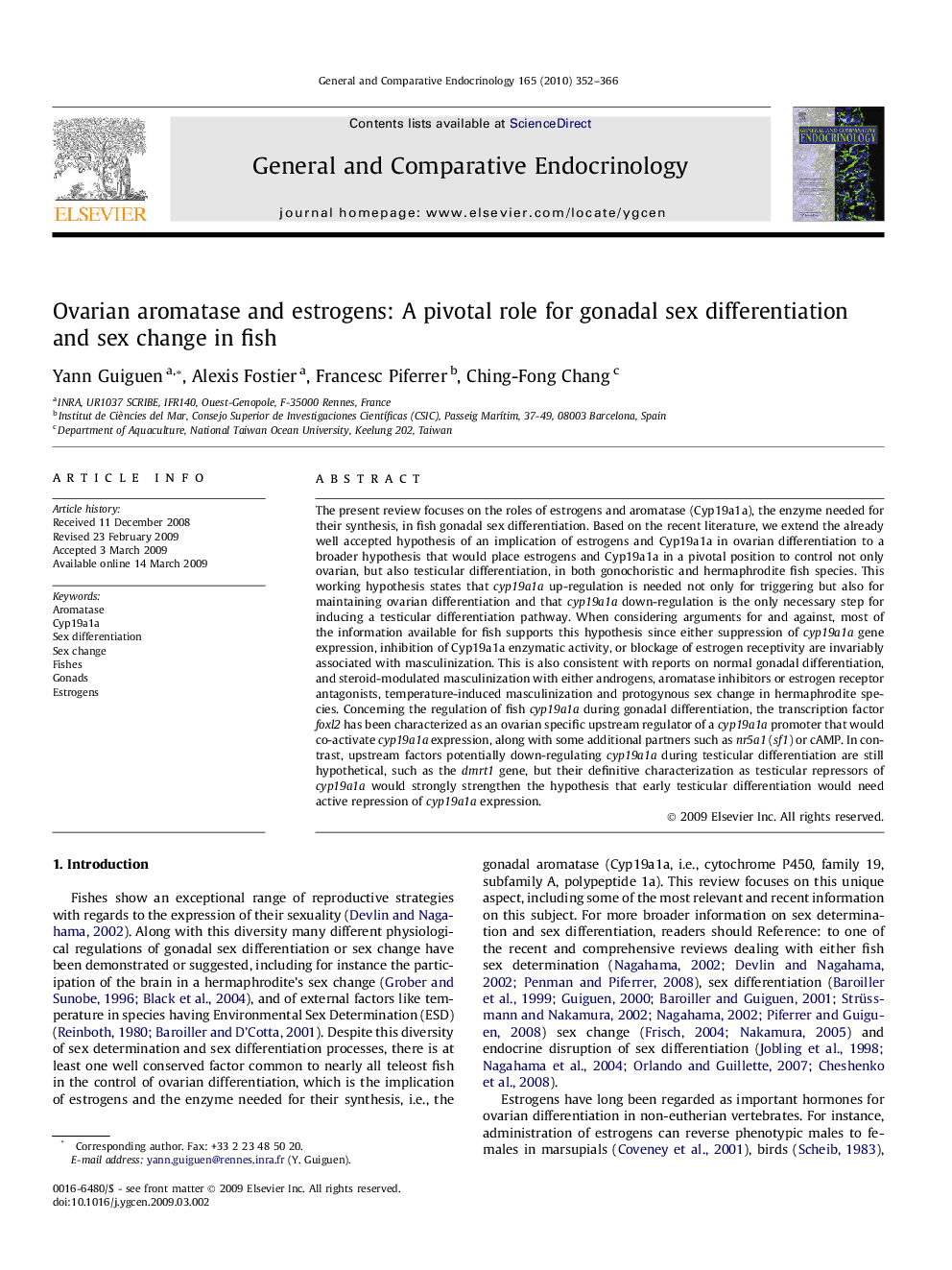| کد مقاله | کد نشریه | سال انتشار | مقاله انگلیسی | نسخه تمام متن |
|---|---|---|---|---|
| 2801341 | 1156155 | 2010 | 15 صفحه PDF | دانلود رایگان |

The present review focuses on the roles of estrogens and aromatase (Cyp19a1a), the enzyme needed for their synthesis, in fish gonadal sex differentiation. Based on the recent literature, we extend the already well accepted hypothesis of an implication of estrogens and Cyp19a1a in ovarian differentiation to a broader hypothesis that would place estrogens and Cyp19a1a in a pivotal position to control not only ovarian, but also testicular differentiation, in both gonochoristic and hermaphrodite fish species. This working hypothesis states that cyp19a1a up-regulation is needed not only for triggering but also for maintaining ovarian differentiation and that cyp19a1a down-regulation is the only necessary step for inducing a testicular differentiation pathway. When considering arguments for and against, most of the information available for fish supports this hypothesis since either suppression of cyp19a1a gene expression, inhibition of Cyp19a1a enzymatic activity, or blockage of estrogen receptivity are invariably associated with masculinization. This is also consistent with reports on normal gonadal differentiation, and steroid-modulated masculinization with either androgens, aromatase inhibitors or estrogen receptor antagonists, temperature-induced masculinization and protogynous sex change in hermaphrodite species. Concerning the regulation of fish cyp19a1a during gonadal differentiation, the transcription factor foxl2 has been characterized as an ovarian specific upstream regulator of a cyp19a1a promoter that would co-activate cyp19a1a expression, along with some additional partners such as nr5a1 (sf1) or cAMP. In contrast, upstream factors potentially down-regulating cyp19a1a during testicular differentiation are still hypothetical, such as the dmrt1 gene, but their definitive characterization as testicular repressors of cyp19a1a would strongly strengthen the hypothesis that early testicular differentiation would need active repression of cyp19a1a expression.
Journal: General and Comparative Endocrinology - Volume 165, Issue 3, February 2010, Pages 352–366